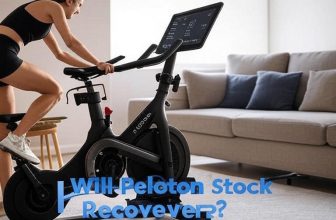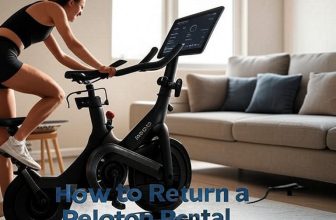Table of Contents
- Stair Stepper Vs Treadmill: What You Need To Know Before Buying?
- Overview of stair stepper vs treadmill
- Overview of Stair Stepper
- Overview of Treadmill
- Key Features Compared
- Caloric Burn
- Impact on Joints
- Muscle Engagement
- Display and Programs
- Space and Portability
- Stair Stepper vs Treadmill: Feature Comparison
- The Good and The Bad
- Price Comparison
- Which Is Better?
- Frequently Asked Questions
- 1. What are the primary muscle groups targeted by stair steppers and treadmills?
- 2. How do stair steppers and treadmills impact joint health?
- 3. What are the advantages of using a treadmill’s incline feature compared to stair steppers?
- 4. Which machine is better for a high-intensity interval training (HIIT) workout?
- 5. How do the maintenance requirements of stair steppers compare to treadmills?
- BEST Cardio Machine For FAT LOSS!
- Conclusion
- About Author
- Mariar Fernandez
As an Amazon Associate, I earn from qualifying purchases.
Stair Stepper Vs Treadmill: What You Need To Know Before Buying?
stair stepper vs treadmill, The battle between the stair stepper vs treadmill isn’t just about which machine burns more calories—it’s also about personal fitness goals and preferences. Did you know that a 30-minute stint on a stair stepper can burn up to 260 calories, similar to medium-intensity running on a treadmill? With stats like these, knowing which piece of equipment better suits your workout style can feel like a fitness revelation.
The stair stepper emerged in the 1980s as a favorite for those wanting low-impact, high-intensity workouts targeting the lower body. This contrasts with the treadmill, which has been a staple in homes and gyms since the early 1900s, praised for its versatility in simulating walking, jogging, and running. Recent studies show that both machines effectively improve cardiovascular health, but the choice ultimately hinges on one’s specific fitness ambitions and joint health considerations.
| Feature | Stair Stepper | Treadmill |
|---|---|---|
| Caloric Burn | Up to 260 calories in 30 minutes | About 300 calories in 30 minutes |
| Impact on Joints | Low impact | Higher impact, cushioned belts available |
| Muscle Engagement | Lower body focused | Full body workout |
| Display Features | Basic info like time and steps | Advanced data like speed, heart rate, and distance |
| Space and Portability | Compact and portable | Larger but foldable |
:max_bytes(150000):strip_icc()/Stairmaster-vs-Incline-Treadmill-recsuirsTYK4mimoL-89e7e6acb5c646fe82b6187701fa2fe2.jpg)
Overview of stair stepper vs treadmill
Both stair steppers and treadmills help people stay healthy by providing great workouts. They each have unique features and benefits. Let’s look more closely at each one.
Overview of Stair Stepper
The stair stepper is a fitness machine that simulates walking up stairs. It’s great for strengthening leg muscles and improving cardio health. People use it to get a low-impact workout.
It has pedals that move up and down, making you feel like you’re climbing stairs. This action helps tone the thighs, calves, and glutes. Many find it a great way to burn calories.
Stair steppers also have handles to hold onto for balance. This ensures stability while working out. Some models even have different resistance levels.
These machines are often found in gyms. They are popular because they provide a challenging yet safe exercise. Many enjoy its simplicity and effectiveness.
A stair stepper is a good choice for those with joint concerns. Its low-impact nature means less stress on knees and ankles. This makes it ideal for regular use.
Overview of Treadmill
A treadmill is a versatile workout machine. It allows you to walk, jog, or run in place. This flexibility makes it suitable for many fitness levels.
Treadmills have a moving belt that you walk or run on. You can adjust the speed to match your workout intensity. Some also have incline settings to mimic uphill walking or running.
Using a treadmill helps improve heart health and build stamina. It’s a good way to burn calories and manage weight. Many people use it as part of their regular exercise routine.
Most treadmills come with digital displays. These show time, speed, distance, and calories burned. This feature helps users track their progress and stay motivated.
Treadmills are common in both homes and gyms. They are reliable and easy to use. Whether you want a gentle walk or a hard run, a treadmill can meet your needs.
Key Features Compared
Stair steppers and treadmills both offer unique features that cater to different workout needs. Comparing these features can help you decide which machine suits you best. Let’s look at some of their key features.
Caloric Burn
Both stair stepper vs treadmill are effective at burning calories. On a stair stepper, you can burn around 260 calories in 30 minutes. This depends on your weight and intensity.
Similarly, a treadmill can help you burn about 300 calories with a 30-minute jog. Adjusting the speed and incline can increase the calories burned. This makes treadmills very versatile.
Stair steppers focus more on lower body muscles. This can lead to high calorie burns due to intense leg work. Treadmills allow for full-body movement, engaging more muscles.
While both machines are great for weight loss, treadmills might offer more flexibility. You can easily switch between walking, jogging, and running. This variety keeps workouts interesting.
Impact on Joints
Stair steppers are known for their low impact on joints. This makes them ideal for people with knee or ankle issues. The smooth, controlled motion reduces stress on these areas.
Treadmills can be higher impact, especially at higher speeds. Running puts more stress on your joints compared to walking. However, many treadmills now have cushioned belts to help absorb shock.
Choosing a lower speed or incline on a treadmill can also lessen the impact. Walking on a treadmill keeps joint stress minimal. This option might be better for gradual joint recovery.
For regular, intense workouts, stair steppers might be safer for joints. But with proper care, treadmills can also be used without causing harm. Selecting the right settings is key.
Muscle Engagement
Stair steppers mainly target the lower body. As you step, you work your thighs, calves, and glutes. This helps build strong leg muscles.
Treadmills engage both the lower and upper body. Running or walking involves your legs, arms, and core. This results in a balanced workout.
Increasing treadmill incline can intensify muscle engagement. It makes the workout harder and targets additional muscle groups. This can benefit overall strength building.
Stair steppers are excellent for toning legs. Treadmills offer broader muscle engagement. Both have their strengths, depending on your fitness goals.
Display and Programs
Stair steppers usually come with simpler displays. They show basic info like time, steps, and calories burned. Some have settings to adjust resistance.
Treadmills often have more advanced displays. These screens can show speed, distance, heart rate, and more. Many treadmills also offer workout programs.
Programs on treadmills can simulate different terrains or training plans. This adds variety to your workout. It can also help you stay motivated and challenged.
Stair steppers might lack some advanced display features. But they still offer effective, straightforward workouts. It’s all about what kind of user experience you prefer.
Space and Portability
Stair steppers are generally smaller and more compact. They take up less space in homes or gyms. This makes them easier to store.
Treadmills are larger and require more space. Their size can be an issue in smaller rooms. However, many treadmills can fold up to save space when not in use.
Some stair steppers are even portable. You can easily move them from one place to another. This flexibility can be a big plus for home workouts.
Choosing between a stair stepper and a treadmill might come down to the available space. Think about where you will use and store the machine. This will make your workout setup more convenient.
Stair Stepper vs Treadmill: Feature Comparison
Stair steppers and treadmills have different features that offer unique benefits. Comparing these features helps you find the best machine for your fitness goals. Let’s explore their main differences in the table below.
| Feature | Stair Stepper | Treadmill |
|---|---|---|
| Caloric Burn | Up to 260 calories in 30 minutes | About 300 calories in 30 minutes |
| Impact on Joints | Low impact | Higher impact, cushioned belts available |
| Muscle Engagement | Lower body focused | Full body workout |
| Display Features | Basic info like time and steps | Advanced data like speed, heart rate, and distance |
| Workout Programs | Limited options | Variety of built-in programs |
| Space and Portability | Compact and portable | Larger but foldable |
| Adjustable Intensity | Resistance levels | Speed and incline settings |
| Noise Level | Quiet | Can be noisy at high speeds |
| User Experience | Simple and effective | Interactive and versatile |
| Cost | Generally more affordable | Can be more expensive |
The Good and The Bad
Both stair steppers and treadmills have their pros and cons. Knowing these can help you choose the best machine for your needs. Here is a table comparing the good and the bad of each.
| Pros | Cons |
|---|---|
| Low impact on joints | Can be repetitive |
| Easy to use | Limited workout variation |
| Great for lower body | Not as engaging for upper body |
| Compact and portable | Basic display options |
| Affordable | Limited advanced features |
| Versatile workout options | Higher impact on joints |
| Advanced display and programs | Requires more space |
| Engages full body | Can be noisy |
| Folding options available | Can be expensive |
| Suitable for all fitness levels | More maintenance required |
Price Comparison
When deciding between a stair stepper and a treadmill, the cost is an important factor. Both machines vary in price based on their features and quality. Let’s compare the prices in the table below.
| Stair Stepper | Treadmill |
|---|---|
| Basic models: $100 – $300 | Basic models: $300 – $600 |
| Mid-range models: $300 – $700 | Mid-range models: $600 – $1,200 |
| High-end models: $700 – $1,500 | High-end models: $1,200 – $3,000+ |
| Maintenance cost: Low | Maintenance cost: Medium to High |
| Warranty: 1 to 3 years | Warranty: 1 to 5 years |
Which Is Better?
Choosing between a stair stepper and a treadmill depends on your fitness goals and personal preferences. Both machines offer excellent workouts but differ in how they impact your body. It’s important to understand these differences to make the best choice for your needs.
If you prioritize low-impact exercises, a stair stepper might be the better choice. It’s designed to be gentle on your joints while still providing a challenging workout. This is especially beneficial for people recovering from injuries or those who have joint issues.
On the other hand, if you want a versatile machine that can offer varied workouts, a treadmill might be more suitable. Treadmills can simulate walking, jogging, and running, allowing you to adjust the intensity of your workout. Many also come with advanced features like workout programs and heart rate monitors.
While both machines have their pros and cons, the final decision should be based on what you value most in your fitness routine. Each person might find one machine more suitable than the other based on their individual needs.
3 Reasons to Choose the Treadmill:
- More versatile with walking, jogging, and running options.
- Advanced features like workout programs and heart rate monitors.
- Engages both lower and upper body muscles for a balanced workout.
Frequently Asked Questions
Stair steppers and treadmills are popular choices for cardio workouts, but they have distinct features and benefits. Here are some common questions experts have about these two machines, along with professional insights.
1. What are the primary muscle groups targeted by stair steppers and treadmills?
Stair steppers primarily target the lower body muscles, including the thighs, calves, and glutes. This makes them excellent for strengthening and toning the legs. The repetitive step motion also builds endurance in these muscle groups.
Treadmills work both the lower body and the core. Walking, jogging, or running on a treadmill engages not only the leg muscles but also the abdominal muscles. Adding an incline on the treadmill can further intensify this workout, offering even more muscle engagement.
2. How do stair steppers and treadmills impact joint health?
Stair steppers are known for being low-impact, making them kinder on the joints. The smooth, controlled stepping motion reduces stress on your knees and ankles, making it suitable for people with joint issues or those recovering from injuries.
Conversely, treadmills can be higher in impact, especially when used for running. However, many modern treadmills come with cushioned belts designed to absorb shock and reduce the impact on joints. Opting for lower speeds or walking can also mitigate joint stress.
3. What are the advantages of using a treadmill’s incline feature compared to stair steppers?
A treadmill’s incline feature allows you to simulate uphill walking or running, significantly increasing the intensity of your workout. This feature engages more muscle groups, including the glutes and hamstrings, and helps in burning more calories.
While stair steppers don’t offer an incline feature, they naturally provide an uphill climbing motion. This constant stepping action intensely targets the same lower body muscles without needing to adjust settings, making it simpler for users.
4. Which machine is better for a high-intensity interval training (HIIT) workout?
Treadmills are highly versatile for HIIT workouts. You can easily adjust the speed and incline to create intervals of high and low intensity, making it excellent for cardio and endurance training. Many treadmills also come with built-in HIIT programs.
Stair steppers can also be used for HIIT but are generally more limited in their intensity adjustment options. Increasing the stepping speed is the primary method to intensify the workout, which might be less effective compared to the diverse settings on a treadmill.
5. How do the maintenance requirements of stair steppers compare to treadmills?
Stair steppers generally have lower maintenance requirements. Their simpler mechanical structure means fewer parts can wear out or need replacement. Regular cleaning and occasional lubrication typically suffice to keep them in good working order.
Treadmills, on the other hand, require more maintenance. The motor, belt, and other electronic components need regular checks and servicing. Ensuring the belt is properly aligned and lubricated is crucial for the smooth operation of the machine.
BEST Cardio Machine For FAT LOSS!
Conclusion
Choosing between a stair stepper and a treadmill ultimately depends on your individual fitness goals and preferences. Stair steppers offer a low-impact, targeted workout for the lower body, making them ideal for those concerned about joint health. In contrast, treadmills provide versatile, full-body workouts with options for adjusting intensity through speed and incline settings.
Both machines have their unique advantages and drawbacks, but either can be a valuable addition to your exercise routine. Whether you want to build muscle, improve cardio health, or engage in high-intensity training, understanding the distinct features of each machine will help you make an informed decision. Therefore, pick the one that better aligns with your personal fitness journey.







